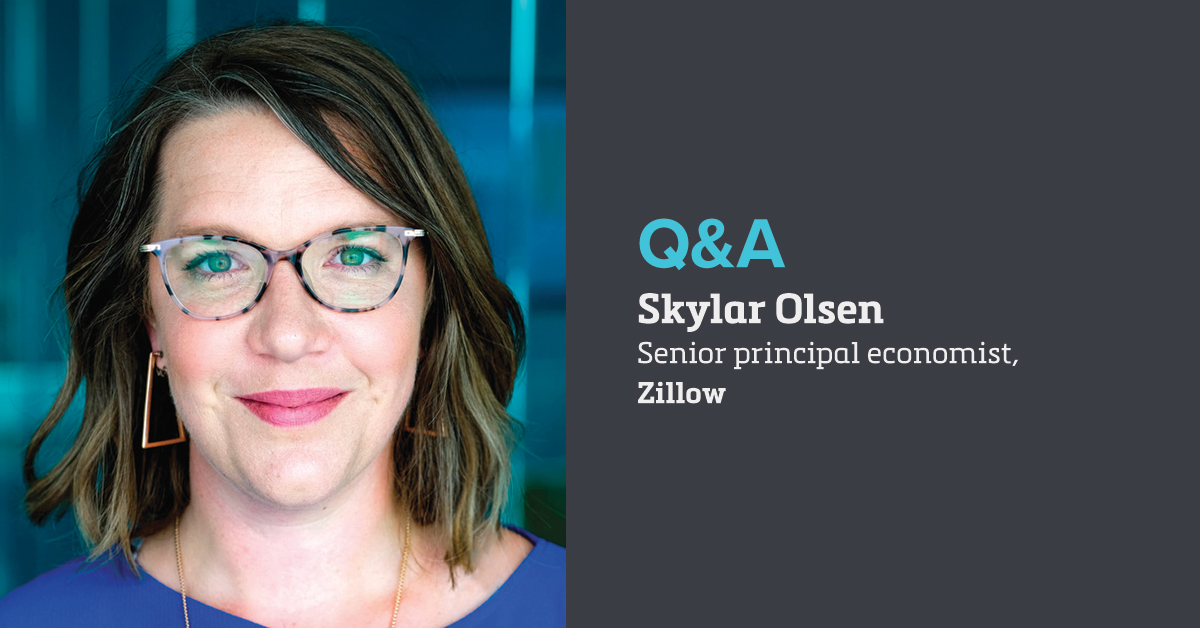Normally, June is the peak of the homebuying season, with 40% of sales for the year occurring between May and August, according to the National Association of Realtors. This year, of course, isn’t normal.
What was set up to be one of the most competitive housing markets in recent years fell apart due to the uncertainty of the coronavirus outbreak and the resulting economic backlash. New listings and home sales plummeted earlier this spring, a time when both are usually on the rise.
Still, the underlying reasons why the market was poised for growth remain, said Skylar Olsen, Zillow’s senior principal economist. There still is a constrained supply of housing inventory. There are still millions of Americans reaching ages where they’re marrying and having children, the stages in life when people generally look to buy homes.
“In other words, you’ve got a lot of people who expected to buy and still want to buy,” Olsen said. “All those fundamentals will still be there.”
Olsen spoke to Scotsman Guide about what could happen during this home-shopping season, how technology has proven critical during the coronavirus pandemic and what it all means for homebuilders.
How will the coronavirus affect the purchase season?
At the very least, it’s pushing it far into the fall or winter, if not beyond. I think there’s still a lot of activity happening in terms of people looking, but [pending sales] dropped 30% [year over year] by the second week of April. New listings to the site, we saw that fall by 44% [year over year]. This home-shopping season is nothing like what was expected.
So, you think the season could be delayed?
I do think what we’ll see is a sales decline, for sure. Absolutely. And then [sales should] rebound a bit above what otherwise might have been expected for next year, just because people will be deferring any purchases that they might’ve been able to make this year. So, pent-up demand will still be there.
Do you expect home values to decline?
I do, but probably not as much as you might think. Here’s why. Really, what we’re going through right now is a demand shock. Buyers are having to pull back because the uncertainty is just so big. We’re also experiencing an incredible supply shock. Demand and supply, both of those have taken a wallop, and that will absolutely impact sales, but they actually have opposing impacts on price. If supply becomes very scarce, that’ll help keep prices more stable.
How important has technology become with virtual tours, FaceTime and electronic closings?
Absolutely crucial. We’ve had 3D tours for over a year now and, for a long time, it was regarded as a niche product. If you’re trying to sell a home right now, and some people absolutely are, you’ve got to have the remote-tour tools. I think we’re up to now 600% growth since February (2020) in terms of the creation of 3D home tours. I think there’s widespread conversations among agents and other housing professionals about virtual open houses and meeting with an agent using virtual tools. Just like lots of people are getting business done remotely, housing — previously a huge face-to-face experience — had to figure out how to do it online.
What do you expect will happen with refinances?
People are rushing for the opportunity for record-low interest rates. In fact, so many people are rushing for the opportunity that the interest rates themselves actually have been very volatile. A lot of that just has to do with the insane volume of requests for refinances. Now credit standards are also increasing, but if it’s just a simple refinance and you’re not taking any cash out, that could still be a really, really valuable way — at a time of job loss, of income loss — to lower that monthly payment, and really cover the gap between now and the eventual and hoped-for economic recovery.
Is there anything else you’d like to add?
We had just had homebuilder confidence like we hadn’t seen in a long, long while. Those single-family start numbers looked record-breaking. They were stunning. They were what we were all waiting for.
Only four states said that residential construction was a nonessential business, but it’s just not something you can get done while socially distancing. And when you build, you’re trying to understand the profitability of releasing something into the world a year from now. The uncertainty is devastating to that industry.








